|
Presenting Access Management and
Roundabouts as Strategies for Improved Road Safety and Efficiency |
.jpg)
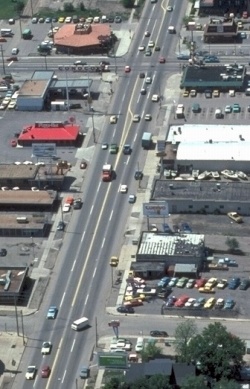

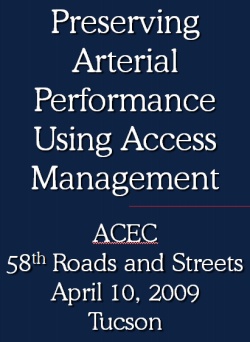
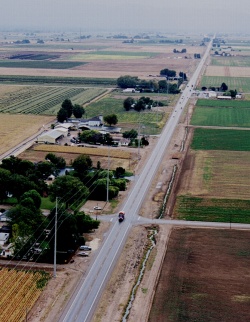
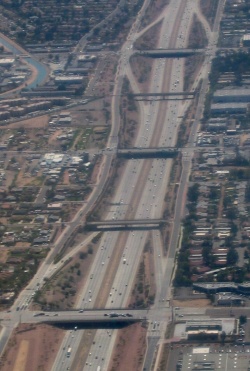
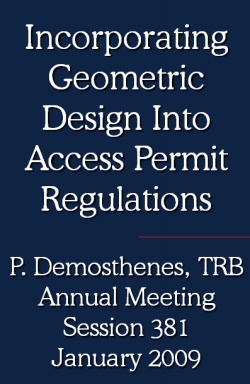
 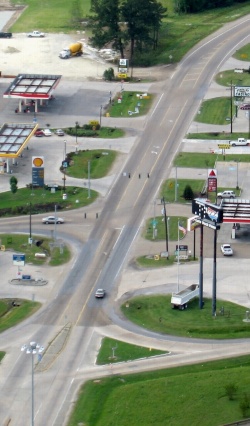
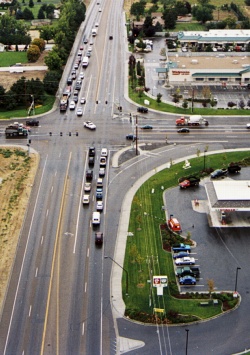 
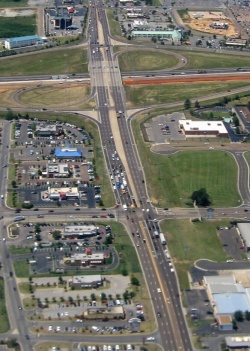
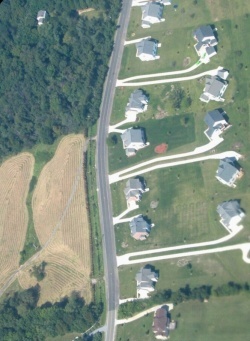 |
If you have any questions about access management, feel free to contact
Phil. He would be happy to respond. What is Access Management Improving road safety and efficiency encompasses a broad range of strategies. These strategies address design, traffic engineering and human behavior. Access management is the one most important roadway management strategy that achieves consistent and long lasting safety and mobility results. Access Management is the careful consideration of the location, type and design of all access points to a roadway in recognition that vehicular maneuvers and volumes at each access point can have specific and accumulative negative consequences to the flow and safety of the roadway for all user types. Managing access starts with systems planning level where decisions are made regarding the hierarchy of roads in a region. The regional plan sets the framework for the secondary and local street system and directly or indirectly determines the location of junction points between significant public roads. Access management strategies apply to programs for long range planning, asset management, safety management, congestion management, freight planning and mobility preservation. On a day to day basis, access management is applied during development site planning, during the reconstruction and improvement of existing roadways, and during driveway permitting. Why Access Management Matters: All roadway agencies are faced with increasing traffic volumes, unacceptable accident rates; loss of life, increasing roadway construction costs, the social and environmental impacts of roadway expansion, increasing maintenance costs and decreasing budgets. By managing roadway access, agencies can improve public safety, extend the capacity life of major roadways, reduce traffic congestion, improve or eliminate 'hot' spots, support the goals of sustainability, support all transportation modes and even improve the appearance and quality of the built environment. Access management is cost effective. Roadways are the Most Dangerous Public Facilities on the Face of the
Earth. At the current U.S. crash rate, one child of every 90 born today will die violently in a motor vehicle crash. 70 out of every 100 will be injured at some point in their lives. The most likely cause of accidental death of an adult is a traffic accident. Access Related crashes, occurring at driveways and intersections represent over 55 percent of all traffic crashes. Over 40% in rural, and 65% in urbanized areas. Over 3,500 access related injures occur each day. Designing for safety is about limiting and managing vehicular conflicts We know that: Every access point is fundamentally a safety
problem: When access principles are applied to a specific
Corridor: Access management strategies support the goals and objectives of traffic engineering as well as a range of performance-based transportation management systems, such as asset management, congestion management and safety management. It uses a combination of strategies derived from land use planning, transportation planning, traffic engineering, roadway design and law. Access management helps preserve public investment in the roadway system by maintaining the functional performance of existing roadways, which in turn helps maintain travel mobility for the efficient movement of goods and services. Access management promotes sustainable land use patterns while preserving the investment in industrial, commercial, residential and other development types that depend on reliable transportation performance. The benefits of access management are not only limited to individual motor vehicles, but also extend to other modes using the corridor, such as transit, pedestrians and bicycles. For example, access management can improve the service and efficiency of bus service in urban and suburban areas. With fewer new arterial roadways being built, the need for effective systems management strategies is greater than ever before. Access management is particularly attractive as it offers a variety of benefits to a broad range of stakeholders. Without access management, the function and character of major roadway
corridors can deteriorate rapidly. Failure to manage access results in the
following adverse impacts: Access related congestion and safety problems adversely affects corridor businesses. Closely spaced and poorly designed driveways make it more difficult for customers to enter and exit businesses safely. Access to corner businesses may be blocked by queuing traffic. Customers tend to avoid business areas with poor access design and congestion. Gradually the older developed areas begin to deteriorate due to congestion and investment moves to newer better-managed corridors. Access Management is good for the Economy. A high quality transportation system provides economic and social benefits by providing better accessibility to markets, employment, and community facilities at a lower cost. Almost every sector of the economy depends on efficient transportation; Goods dependent industries such as manufacturing, agriculture, wholesale trade, retail trade, construction, and mining; Service industries depend on travel efficiency such as tourism, goverment services, professional and business services. Access related congestion and safety risks increases the cost of business and the cost of products at the point of sale - adversely impacting all business sectors. Creating an Effective Program To incorporate access management strategies with design criteria into day-to-day application, a number of programmatic methods are available including regulations, ordinances, policies, procedures and manuals. Access management is interdisciplinary. Successful access management programs require transportation planning, roadway design, traffic engineering and land development to be brought together to establish workable standards and planning criteria. A jurisdiction, such as a municipality, usually implements a new program and standards by adopting administrative rules and development ordinances. At the state level, state DOTs typically establish programs by internal engineering policies or adopting regulations. Discussions regarding access program development often include making a choice between adopting regulations or guidelines. Regulations have proven to be more effective in program implementation and enforcement because they carry the weight of law. Guidelines are only agency adopted best practices and technically are the opinions and judgments of the agency and do not carry the weight of law. Some states, such as Colorado, New Jersey, Florida and others, have incorporated modern access design elements into their access management regulations. This puts the access specific design criteria as well as their procedures under the regulatory umbrella. Another implementation strategy has been establishing access management plans for specific roadway segments. These plans are usually the result of a corridor plan or design project with a strong public process where an interagency cooperative agreement determines the location of all access points and the design of the corridor into the future. Such plans may also be developed for interchange cross roads. The interchange plan allows a performance approach to access controls and can actually help the area maximize its developmental potential without creating a level of congestion that diminishes safety and capacity, thereby limiting development density. Access Program Structure Access programs generally have three major elements—permit processing requirements, specific design, location and engineering criteria within the program or through incorporated manuals, and a unique hierarchical access classification system for all roadways covered by the program. Local government programs may also institute access strategies into their land development requirements that include internal site circulation, cross-parcel connections, special zoning overlay districts, and standards for minimum lot frontage. Access strategies can be incorporated into comprehensive plans and criteria for prioritizing capital improvements. Access Classification Systems The heart of a good access program is a unique access classification system. As stated by the AASHTO, in "A Policy on Geometric Design of Highways and Streets, (The Green Book), "Access classification is the foundation of a comprehensive access management program. It defines when, where and how access can be provided between public highways and private driveways or entrances. Access classification relates the allowable access to each type of highway in conjunction with its purpose, importance and functional characteristics." An access classification guides two decision elements. Should direct access to the roadway be granted? And if so, what are the access location and access design elements that are appropriate and consistent with the long term function of the roadway and will minimize the safety and operational impacts caused by the new access? This program feature allows access management strategies to be context sensitive, from the level of local residential street with very mixed use, to the level of interstate freeway. This is the most important program element for coordination between land use planning and preserving roadway performance. Agencies that have established access category classifications have typically used from five to eight levels. Each category is described by function and performance goals. Each category has different location and design criteria that are tied to long term performance goals for that roadway. Major variables are usually signalized and non-signalized access spacing, what constitutes reasonable private access, the type of access granted, and the warrants for and design of auxiliary turn lanes. Access Design Practices An access program should address design elements in three different areas: Immediate geometric design of the access, roadway operational and safety elements such as turn lanes and sight distance, and signal and non-signalized access spacing and location. While minimum standards achieve the minimum acceptable level of operation and safety, they are not effective at minimizing the impacts of new access. While each access may meet design minimums for safety and operation, the cumulative affect of a proliferation of minimum-based access designs has a significant and detrimental impact on the overall safety and operation of the roadway. An access program should have a goal to minimize accumulative affects. Selling the benefits of access management is a necessary process in program development. There are now many good resources, including video, to help convince decision makers that the benefits in safety and functional preservation outweigh the pain of complaints and resistance in moving forward with a modern access management program. Why Access Management is Often Difficult to Execute:
|